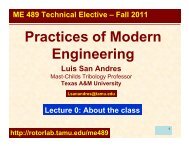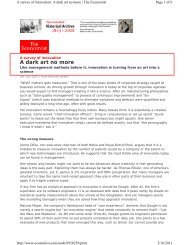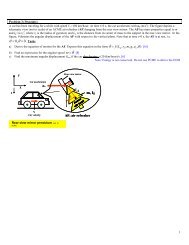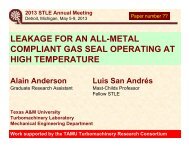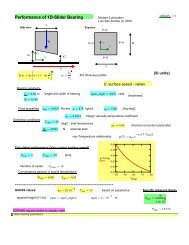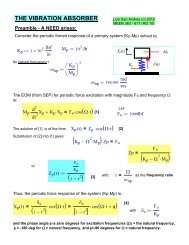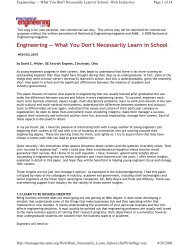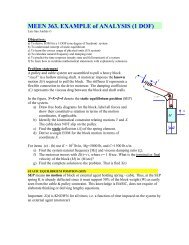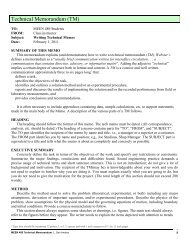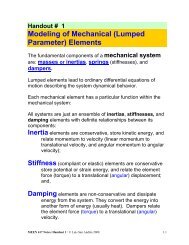TRC-SFD-1-07 - Tribology Group - Texas A&M University
TRC-SFD-1-07 - Tribology Group - Texas A&M University
TRC-SFD-1-07 - Tribology Group - Texas A&M University
Create successful ePaper yourself
Turn your PDF publications into a flip-book with our unique Google optimized e-Paper software.
configurations including open outlets at the discharge groove (i.e. with thru-flow). Figure9 depicts the dry friction force (F d ) identified from the procedure outlined above. Theresults also include the dry friction coefficient (F d =53 N) identified, as in prior reports,from dry system tests (i.e. with no lubricant). Appendix A details the experimentalprocedure to obtain the dry friction force from dry system tests. The test results showgood correlation between both methods, with the current F d being ~2% larger than thatidentified via energy methods and in a lengthier two step procedure. Furthermore, thefriction force remains fairly constant throughout the test frequency range.80Friction Force [N]60402000 10 20 30 40 50 60 70 80Frequency [Hz]Fd (derived from Lxx)Fd (derived from Lyy)Fd (from dry tests)Figure 9 Dry friction force identified from circular centered orbits. Dotted line representsdry friction estimated from energy method and tests under dry conditions.Figure 10 shows, for the largest amplitude of orbital motion (50 μm), the real part ofthe linear path transfer function (L xx , L yy ) and the corresponding curve fit. Table 2presents the identified values of added mass coefficients and the average identified dryfriction force. The added mass results are similar to those obtained in the prior report [3]for the thru-flow configurations (within 15 %). The present results, just like the previousones, show large values of added mass coefficients (i.e. half the system mass) andevidence the importance of fluid inertia effects in <strong>SFD</strong>s.21



